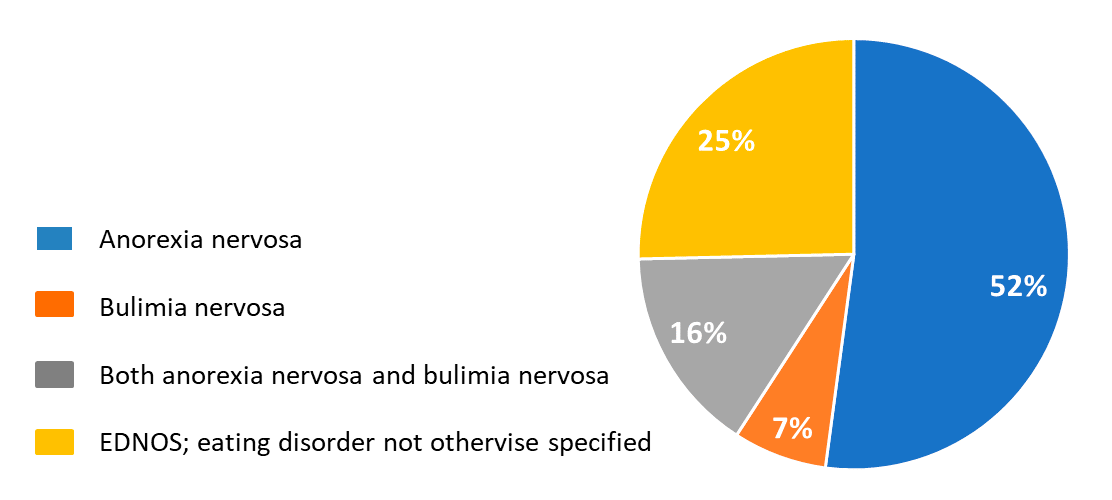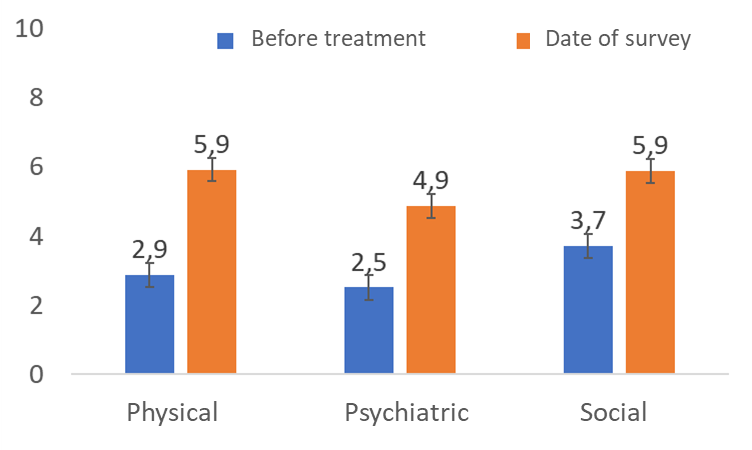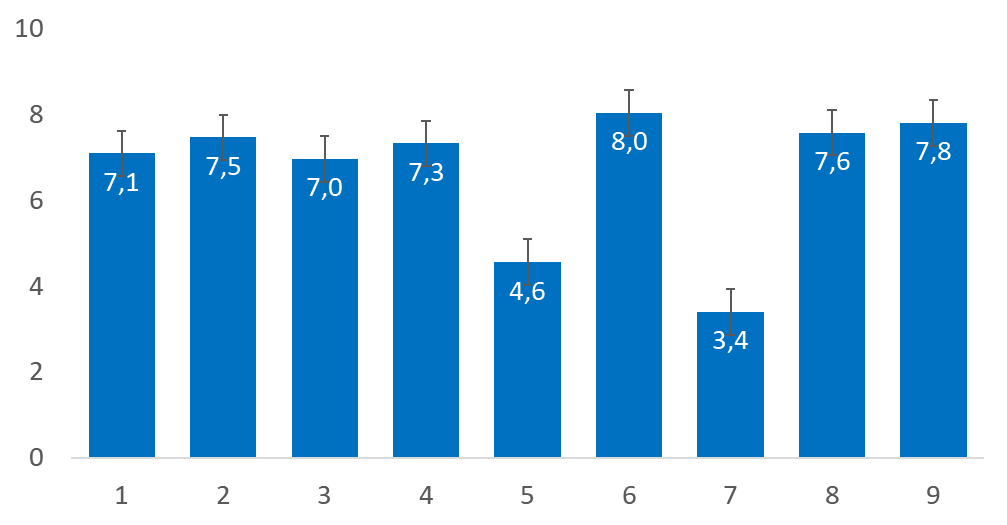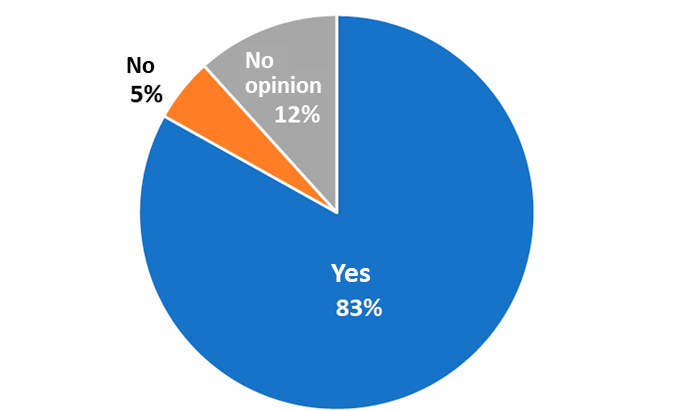The response rate was 82% (Table 1). Anorexia nervosa remained the dominant self reported diagnosis at 52%. 83% of patients reported they would recommend Mandometer treatment to others.
Table 1. Survey distribution and response rate
| Survey distribution |
Responses | (%) |
|---|---|---|
| 94 | 77 | 82 |

The patients surveyed had been in treatment for an average of 5.2 (0.2 -26) months.

The graph (Figure 2) compares patient reports of physical, psychiatric and social wellbeing at the start of treatment to the time of being surveyed. Where 0=very poor and 10=Very good, the averages at the time of being surveyed were; physical (5.9), psychiatric (4.9) and social (5.9) wellbeing, compared to; physical (2.9), psychiatric (2.5) and social (3.7) wellbeing at the beginning of treatment.

- How does the Mandometer treatment work?
- How familiar are you with the treatment?
- Have you been given information about treatment results?
- Do you feel involved in your treatment?
- How does our treatment compare to other treatment you have tried?
- How friendly do you find the staff at the Mandometer clinic?
- How satisfied were you with previous eating disorder treatment you received?
- How satisfied are you with Mandometer treatment?
- How does your experience of Mandometer treatment compare to your experience of previous treatments?

22 patients who felt that something was missing from Mandometer treatment suggested one or more of the following improvements:
More focus on mental wellness (n = 5)
More organized activities (n = 3)
Anxiety Management and Relaxation Exercises (n = 2)
Speak with a psychologist (n = 7)
More activities (n = 1)
More space to be in (n = 2)
More feedback at the end of the treatment (n = 1)
Vegetarian Diet (n = 2)

83 percent of patients responded that they would recommend Mandometer treatment to a friend with an eating disorder (Figure 5).



